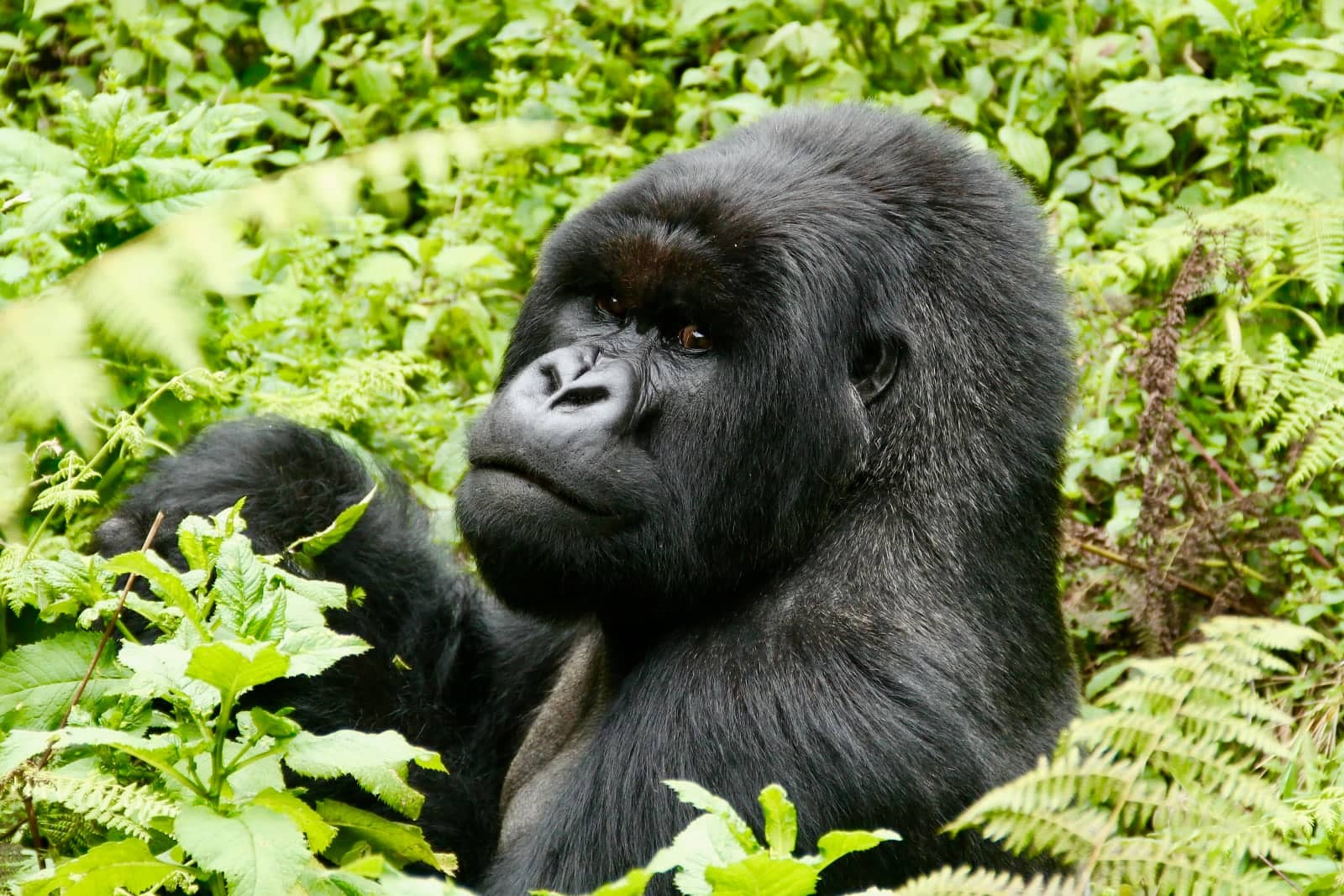
Mountain gorilla Photo credit: Gerry Feehan
The Mountain Gorillas of Rwanda
We’d spent three days with Amon before he talked about the 1994 genocide.
A month earlier arrangements had been made via e-mail for him to pick us up at the airport in Kigali, Rwanda’s capital. A glitch arose on arrival. We were unaware that a pre-issued visa was mandatory. A plea of ignorance was offered to the stone-faced authorities. They were unimpressed and threatened to put us back on a plane to Burundi from whence we had arrived. I employed some Irish Blarney and talked our way past the irritable immigration officials, down to the luggage carousel where Amon Habimana patiently waited.
“I’m sorry,” I apologized, “we didn’t know Canadians needed a visa to visit Rwanda.”
“Hakuna matata,” replied Amon. “No worries.”
I knew I was going to like this guy. He was to be our guide and near constant companion for seven days.
Rwanda is the most densely populated nation in mainland Africa. Eleven million people live in 26,000 crowded square kilometres. That’s four hundred humans for every square kilometre of land. And Rwanda’s terrain is mountainous. It’s known as “mille de collines”, land of a thousand hills. Every arable acre is occupied, a terraced lacework of tiny farms reaching skyward toward extinct volcanic summits.
Rwanda is shrouded in a permanent pall. Charcoal cooking fires and car exhaust meld together into a uniform choking haze. Ironically, the bluish air creates a gorgeous view toward every hilly horizon.
On the roads one is confronted with a steady stream of humanity, everyone going about a daily task: brightly dressed women balancing a heavy load of green bananas or sugarcane atop the head (many with an infant wrapped astern); young boys pushing bicycles up a steep hill toting bags of charcoal tied awkwardly to a rusting frame; men strolling arm in arm, arguing amicably. And children, everywhere children, playing precariously near the chaotic traffic.
To a Canadian accustomed to miles of open prairie the endless spectacle of mankind is overwhelming.
I’ve written about helping Africans in need: building schools, supplying clean water and attending to the infirm. This is the laudable vision of “A Better World”. But tiny Rwanda is crowded to bursting and soon headed for unimaginable pressure on its limited resources. I think family planning is in order.
Then there’s the roads. Rwanda has pavement, but outside Kigali and a few other towns connected to the main highway, asphalt is sorrowfully lacking. Side roads quickly deteriorate into volcanic rubble. When Amon tantalized us one morning with the promise of a massage, I envisioned lying in a beach chair, coconut oil slathered on my weary Western back. Instead we endured a Land Rover laundromat while lurching up a mountain. A multitude of these vehicular “African massages” greeted us throughout our time in what was once known as the Dark Continent.
As we drove we felt like curiosities. Kids would run alongside, laughing and shouting, “Muzungu…Muzungu”. In Mexico it’s Gringo. Here it’s Muzungu: rich person, traveller or just white man; probably not a term of endearment.
Most of us are familiar with the horrors of the Rwandan genocide. Historically there are two Rwandan tribes: the Tutsis and the Hutus. During the “100 days” of 1994 more than 1,000,000 Rwandans were slaughtered – Tutsis and sympathetic Hutus – under a plan orchestrated by the Hutu-dominated army.
Today, remarkably, President Paul Kigame appears to have unified the country. Tribes are passé. Amon explained, “Now we are all just Rwandans.”
The people exude pride. Rwanda is clean. Even the humblest plot of earth is swept spotless. Tourists are returning.
Our quest in Rwanda was to see the endangered mountain gorillas of Parc Nationale de Volcans. There are 700 of these creatures remaining on the planet. That’s 16,000 Rwandans for every lucky gorilla. A pre-paid $500 (per person) permit authorized our one-hour encounter with one of man’s closest relatives.
We awoke at 5:30 a.m. I like my sleep and was shocked to discover that all of Rwanda was already up and at ’em, bananas on their heads and all. But by the time we’d driven to park headquarters, completed the mandatory briefing, been assigned our gorilla group, driven to the drop-off point, hiked for an hour and a half through terraced fields of eucalyptus trees and hopped the stone wall into Parc Volcans it was closing in on noon. I was ready for a nap when the sudden grunt of nearby gorillas evaporated my lethargy.
Gerry
